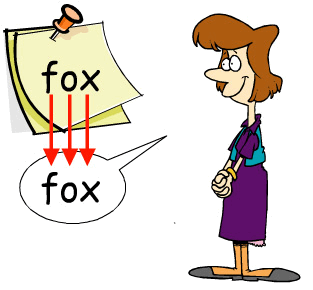7.7 Point-to-Point Correspondence Example #2
Saying “fox” as the result of seeing the word “fox” is an example of point-to-point correspondence. It makes no difference whether the stimulus is auditory or visual. It also makes no difference whether the response is vocal or written. Writing “fox” as the result of hearing someone say “fox” still illustrates point-to-point correspondence.
Point-to-Point Correspondence
A relationship between a discriminative stimulus and the response it controls with the following features:
The discriminative stimulus must have two or more components
The response must have two or more components
The first part of the stimulus must control the first part of the response, the second part of the stimulus must control the second part of the response, etc.

point to point correspondence is only concerned with verbal communication?